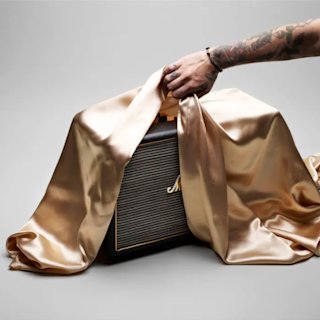
Paramore and My Chemical Romance performing with Marshall amplifiers.
Emo first sprang up in the ‘80s as an offshoot of hardcore (its name comes from “emocore”, or “emotional hardcore”), but it wasn’t until the ‘00s that it really went mainstream. This was a time when introverted fans were donning black eyeliner and seeking solace in music that screamed: “I’m not okay”. And while the subculture drew negative attention from some areas of the press concerned by the trend of apparent gloominess among teens, it was, in fact, as misunderstood as the people who listened to it.
Emo gave those who felt like outsiders a community that had otherwise evaded them. With acts like Bright Eyes, Paramore, and My Chemical Romance as their idols, the subculture spread internationally via early social networking sites like Myspace and Tumblr. This allowed the fans – typically teenagers in a developmental phase of their lives – to connect with others and express their emotions instead of bottling everything up. As a musical genre, emo championed this outpouring of difficult emotions – often dealing with subjects like mental health in its lyrics.
Emo gave those who felt like outsiders a community that had otherwise evaded them.
Those involved with the scene had a distinctive way of dressing – from skinny jeans, lip piercings, and band t-shirts to checkered sweatbands from Hot Topic. Hairstyles were dyed black or in bright, unnatural colours, and were often cut with a large, sweeping fringe that covered half of the face. Despite their unique look, emos were often lumped in with punks and goths – much to the ire of all parties. The emos were far less outwardly angry and extroverted than the former, and at odds with the new wave tastes of the latter. It was inherently emo, of course, that they didn’t fit in with either movement in the first place.
These elements all added to the sense of quiet togetherness in the emo community that fostered a sense of belonging. In 2006, when My Chemical Romance released their melodramatic concept album ‘The Black Parade’, they effectively cemented the subculture in the mainstream. The album became a call-to-arms for emo fans to assemble and unite in a statement of collective pride, with the fictional black parade of the record’s title manifesting in great numbers in the real world.
The sense of community established in the subculture still endures. And while the visibility of the emo bands and fandom of the mid-‘00s has subsided, the scene is today looked back upon today with a much greater appreciation than it ever was at the height of its mobility.




